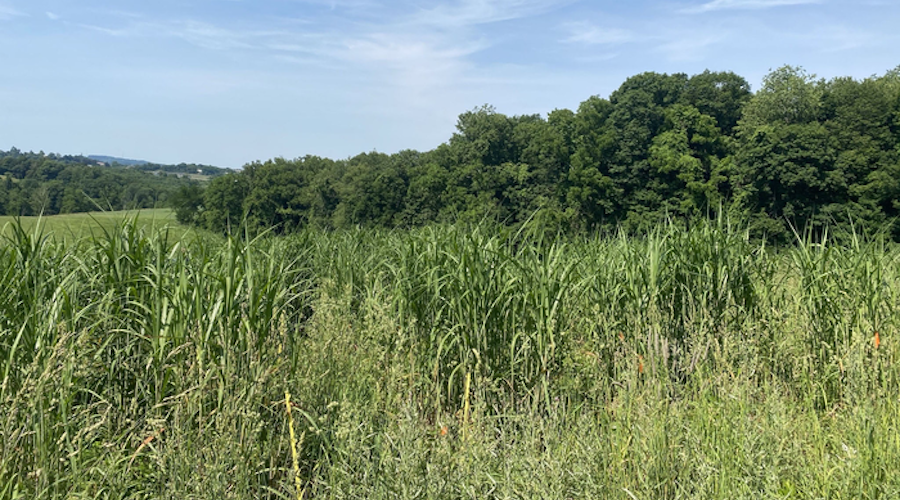Staff Writer | June 9, 2022

Miscanthus x giganteus. (Image by Jenni Kane, courtesy of West Virginia University).
Researchers at West Virginia University are studying the role of fertilization in the relationship between the perennial grass Miscanthus x giganteus and certain microbes, to determine how the plant would behave under different climate change scenarios and support pollution mitigation efforts.

With over $800,000 in funding from the US National Institute of Food and Agriculture, the scientists are focusing their work on the tall grass because it has shown to be effective to regenerate damaged soils from mining.
In detail, the group is examining the ability of miscanthus to give new life to the soils in Appalachia, as in the region thousands of acres of land have been deemed unsuitable for crop cultivation because of past mining.
“Anyone could grow miscanthus on their land on a small scale or a larger scale,” Jenni Kane, a doctoral student involved in the study, said in a media statement. “This could become a crop that can be grown and sold. It could also bring back nutrients and soil structure, so the long-term impact could be economic and environmental.”
In Kane’s view, production on marginal land can help improve soil health and isolate soil carbon, restoring the land and mitigating climate change.
“The better we can have plants grow and take CO2 from the air and put it into the ground, the better outcome we can have with climate change,” soil science professor Jeff Skousen pointed out.
No comments:
Post a Comment